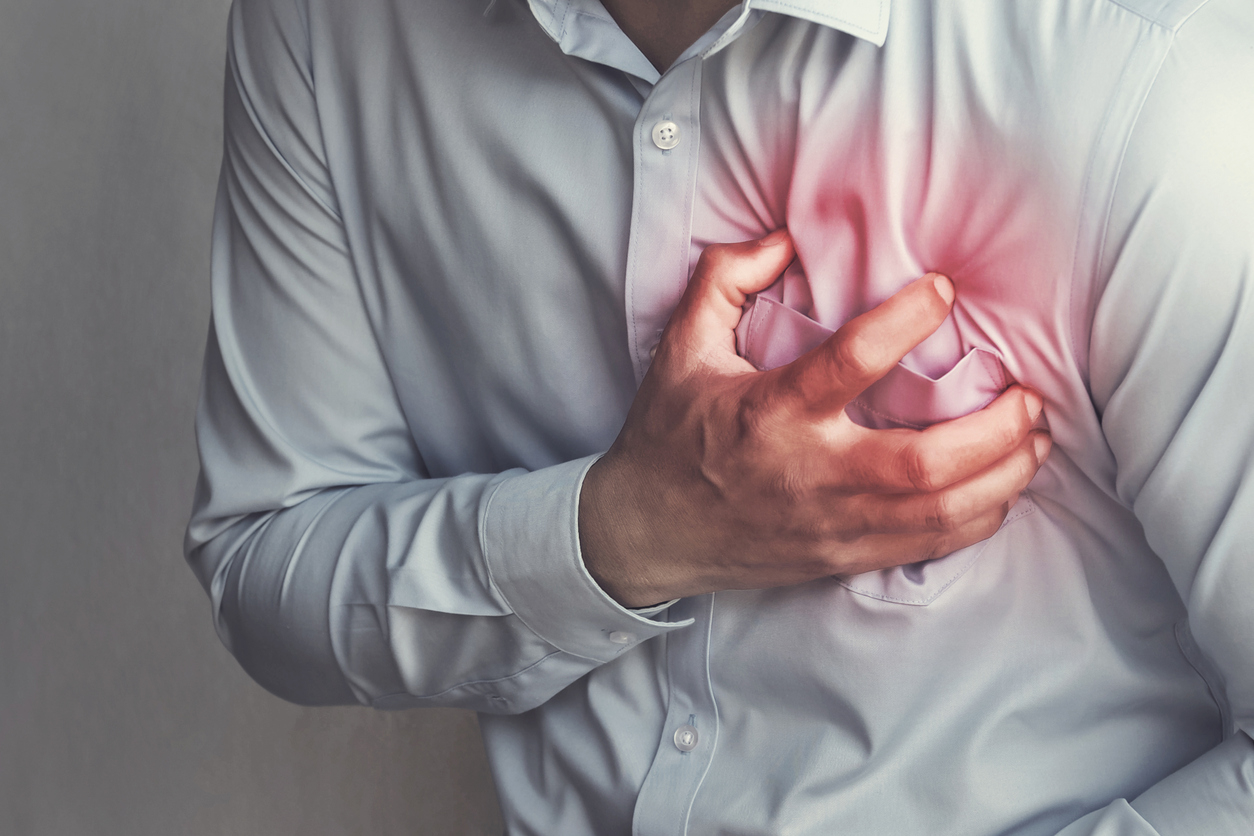Commitment + Clinical Leadership = Better Outcomes

10 Common Causes of Chest Pain
Chest pain is the second biggest cause of emergency room (ER) visits each year.1 Many people of all ages experience chest pain, and often it is a symptom of a health problem.
However, not all chest pain means that you have a life-threatening health issue. Chest pain can stem from many different causes, some that are dangerous and some that are not harmful. It’s important to be able to identify the cause of your chest pain to decide if it’s necessary to take a trip to the emergency room.
Common Causes of Chest Pain
Here are some of the most common causes of chest pain and how they can be identified. If you’re unsure of the cause of your chest pain, seek help from a medical professional to receive a proper diagnosis.
- Asthma. Asthma is a common lung disease that causes wheezing, breathing difficulty, chest tightness, and coughing. Asthma can cause chest pain, but it’s even more common with an asthma attack. An asthma attack occurs when the airways in the lungs swell, causing the airway to shrink. Asthma attacks can be dangerous and can sometimes lead to ER visits.2 If you or a loved one have signs of asthma, talk with a doctor about risks and management.
- Panic attack. About 11% of Americans experience a panic attack each year, resulting in difficulty breathing, a racing heart, and sweating.3 Panic attacks share some of the same symptoms as a heart attack because you often lose control and experience chest pain.4 Panic attacks are frightening, but not life threatening.
- Pericarditis. Pericarditis is inflammation of the pericardium, a sac-like structure made of tissue that surrounds the heart.5 Chest pain is a common symptom of pericarditis because the sac’s layers become inflamed and cause a rubbing sensation against the heart. Different infections, including COVID-19, can cause pericarditis, and it’s important to seek medical attention from a doctor if you experience chest pain that may be related to a heart issue.
- Pneumonia. Pneumonia is an infection in the lungs, and it can affect one or both of the lungs. Pneumonia is typically caused by a virus or bacteria. Chest pain is one of the symptoms of pneumonia, but there are other symptoms that can distinguish this infection such as fever, shortness of breath, and a cough that produces discolored mucus.6
- Myocarditis. Myocarditis is the inflammation of the myocardium, the heart muscle. This inflammation can lead to a rapid heartbeat due to the heart’s inability to pump efficiently. Symptoms include chest pain, fatigue, and irregular heartbeat.7
- Hypertension. Hypertension is when an individual’s blood pressure is higher than normal. Blood pressure is the pressure at which blood pushes against the walls of the arteries.8 High blood pressure levels can put you at risk for heart disease, stroke, and heart attack. Chest pain is common with high blood pressure because there is a decreased flow of blood and oxygen to the heart. It’s important to treat hypertension with a healthy lifestyle, and medicine if necessary, to avoid heart disease and heart attack.
- Muscle strain. Muscle strains in different areas, including the chest or around the ribs, can cause chest pain.1 A good indicator of a muscle strain being the source of your chest pain is if the pain gets worse with activity or physical exertion. When this happens, it’s best to rest and allow the muscle to heal.
- Collapsed lung. A collapsed lung is a rare condition, but it can cause chest pain. It occurs when air gets inside the chest cavity and creates pressure against the lung. Different medical conditions can cause a collapsed lung including asthma, pneumonia, and tuberculosis. Smoking, certain physical injuries, and being pregnant are also risk factors.9
- Mitral valve prolapse. Mitral valve prolapse is a heart valve disease in which the flaps of the mitral valve are floppy and cause blood to leak across the valve. This condition is not typically life-threatening, although some people may need surgery depending on their case. An irregular heartbeat, dizziness, difficulty breathing, and fatigue are common symptoms of mitral valve prolapse.10
- Heart attack. Heart attacks are severe and require immediate medical attention. It’s critical to know the symptoms of a heart attack so you know how to distinguish it from other chest pain. The chest pain associated with a heart attack can feel like pressure or squeezing, and it lasts for more than a few minutes. There’s also pain in other areas including the arm, back, neck, or jaw. Nausea and lightheadedness can also occur.11
Learn More
If you experience new chest pain or a change to your current chest pain, talk with your doctor about your symptoms to receive a proper diagnosis. If you experience chronic chest pain alongside other life-threatening symptoms, seek immediate medical attention.
Saber Healthcare is an organization dedicated to providing consultant services to long term care providers. This article is for informational purposes and is not meant to be seen as professional advice. Please consult with a medical expert before relying on the information provided.
Sources
- https://www.medicalnewstoday.com/articles/321650.
- https://www.cdc.gov/asthma/about/?CDC_AAref_Val=https://www.cdc.gov/asthma/faqs.htm
- https://my.clevelandclinic.org/health/diseases/4451-panic-disorder#:~:text=How%20common%20are%20panic%20attacks,on%20to%20develop%20panic%20disorder.
- https://www.mayoclinic.org/diseases-conditions/panic-attacks/symptoms-causes/syc-20376021#:~:text=A%20panic%20attack%20is%20a,heart%20attack%20or%20even%20dying.
- https://www.heart.org/en/health-topics/pericarditis/what-is-pericarditis.
- https://www.hopkinsmedicine.org/health/conditions-and-diseases/pneumonia#:~:text=Pneumonia%20is%20an%20infection%20of,(lobes)%20of%20the%20lungs.
- https://www.mayoclinic.org/diseases-conditions/myocarditis/symptoms-causes/syc-20352539.
- https://www.cdc.gov/high-blood-pressure/about/?CDC_AAref_Val=https://www.cdc.gov/bloodpressure/about.htm
- https://my.clevelandclinic.org/health/diseases/15304-collapsed-lung-pneumothorax.
- https://www.mayoclinic.org/diseases-conditions/mitral-valve-prolapse/symptoms-causes/syc-20355446.
- https://www.heart.org/en/health-topics/heart-attack/warning-signs-of-a-heart-attack.
